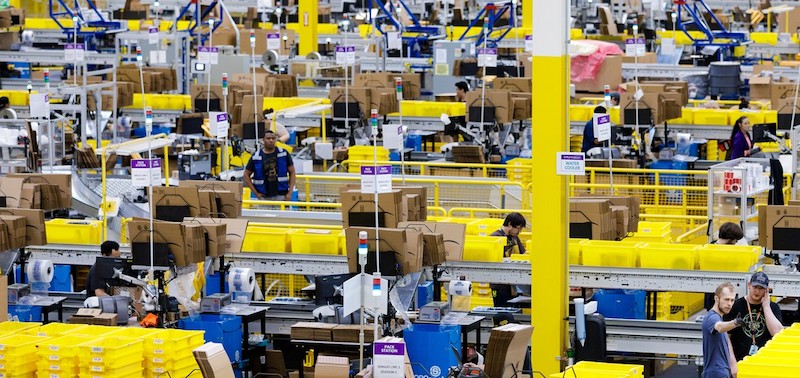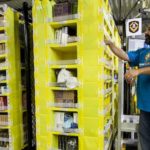You could argue that Amazon is winning because of a war chest that would make Solomon jealous. Or maybe it’s their army of engineers, robots and delivery drivers. But Amazon didn’t start out with these advantages.
Jeff Bezos built the company with a customer-first mentality. An empty chair representing the customer at every Amazon meeting serves as a constant internal reminder of their focus. Bezos is often quoted as saying, “Obsessing over customer experience is the only long-term defensible competitive advantage.”
Too bad they don’t treat their business partners the same way.
Still, Amazon isn’t the enemy. Kevin Costner’s Field of Dreams “build it and they will come” mentality is your enemy. Most distribution leaders take a sales-first approach to digital strategy. They build for their company, executive team and board. Meanwhile, Amazon is building for their customers, following the adage, “Start with the customer and work your way back.”
Seek Outside Input
Early in my career, before distribution, I found myself running the marketing at a small company. I started as the tech guy who built the website, which definitely meant I was qualified to run marketing.
Even though the website worked, and we outranked our competitors in Google, we weren’t converting visitors into customers. This was around the time phone books were disappearing and customers were turning to their devices to find businesses. Traditional marketing wasn’t getting the job done.
I was desperate for conversions. Nothing was working. In my search for solutions, I read a quote by relationship expert Danny Silk, where he explained that meeting someone’s need is the most basic building block for establishing connection and trust. I knew nothing about marketing, but I could make friends, so I made it my goal to apply that concept to the web.
In that pursuit, I joined the sales team, technicians and managers in the field. I interacted with as many customers as possible. I sold them services, I got to know them, I got to know their pain points. My goal was to understand their needs and meet them.
Then, I built for them.
Nothing went live before I’d gotten feedback from customers or potential customers. I would approach strangers at Starbucks and ask them to review our web app or sales copy. I applied their feedback immediately, sometimes watching conversion rates climb in real time.
After a few months, leads started to fill our pipeline. The president of the company frantically told me to “turn off” the marketing because operations couldn’t keep up with demand. It meant something was working.
But then I made the mistake of trying to apply what I learned from those customers to other businesses. It was not a complete failure, but it didn’t work as well. Each company’s customer base is as unique as the company itself.
Build for Your Customer
I’m a big believer in best practices, but that can’t replace building for your specific customer. There are scores of Amazon clones out there that never made it. They didn’t build for their customers, so they failed.
As I moved into distribution, I found resistance to this customer-first model. You have highly segregated organizations where marketing and sales are in silos. Understandably, sales people don’t want tech and marketing folks talking to their customers. It’s a risk for them. But in the process, you end up with IT and marketing leaders who have spent little-to-no time with customers. And the leaders who regularly interact with customers don’t typically understand the technology.
With this approach, you end up with three types of deciders:
- Leaders who are disconnected from the customer, but understand customer-facing technology.
- Leaders who don’t understand customer-facing technology but are connected to customers.
- Leaders who aren’t experienced with either.
No. 3 happens because you have an IT leader who understands technology, so he’s settled with the project. But he doesn’t know how to build for customers.
When IT rolls out new software internally, they’ve gotten the software approved by the executive team. The decision was based on functionality at the senior levels. Rarely are employees who have to use the software everyday heavily involved in that decision. That can lead to frustrated employees. But the company pays their paycheck, so employees have to adapt.
Customers don’t work that way. I’ve sat in meetings where I’ve heard IT leaders say, “Our customers will have to just use it the way we build it.” Or, “We’ll need to train our customers to use the system.”
If you have to “train” your customers to use a piece of technology, you built it wrong. Customer-facing technology should lower your customers’ feelings of anxiety, not increase them. They simply need to love using it.
Solidify a Customer-First Approach
Rather than formally establishing a customer-first approach — a method that can be disruptive — start by simply getting your IT and marketing folks in front of customers. Send them on sales calls with sales people who are happy to coach them on interacting with customers. If you have a counter business, put them in the store.
The second part of the equation is getting customers involved in the ideation process. This can be done in a 30-minute meeting. The goal is to find out what their pain points are. Ask open-ended questions and let them talk.
I took this approach in my first distribution site build. I spent hours with customers before we ever wrote one line of code. Then we built what the customer wanted. They rewarded us with adoption and sales dollars.
Your next step in gathering data from customers is using services like UserTesting.com, Qualtrics and chat.
If you want to build a digital moat around your business to protect it from the Amazon hordes, then build for the customer first. They’ll reward you with adoption and sales dollars.
Jason Capshaw is MDM’s Director of Technology.
Related Posts
-
Amazon's new 820,000 square-foot site in the city of Pflugerville will create 1,000 new, full-time…
-
New 625,000 square-foot site in the city of El Paso — the second facility coming…
-
Amazon's new fulfillment center in Temple Terrace and new delivery station in Lutz will create…





